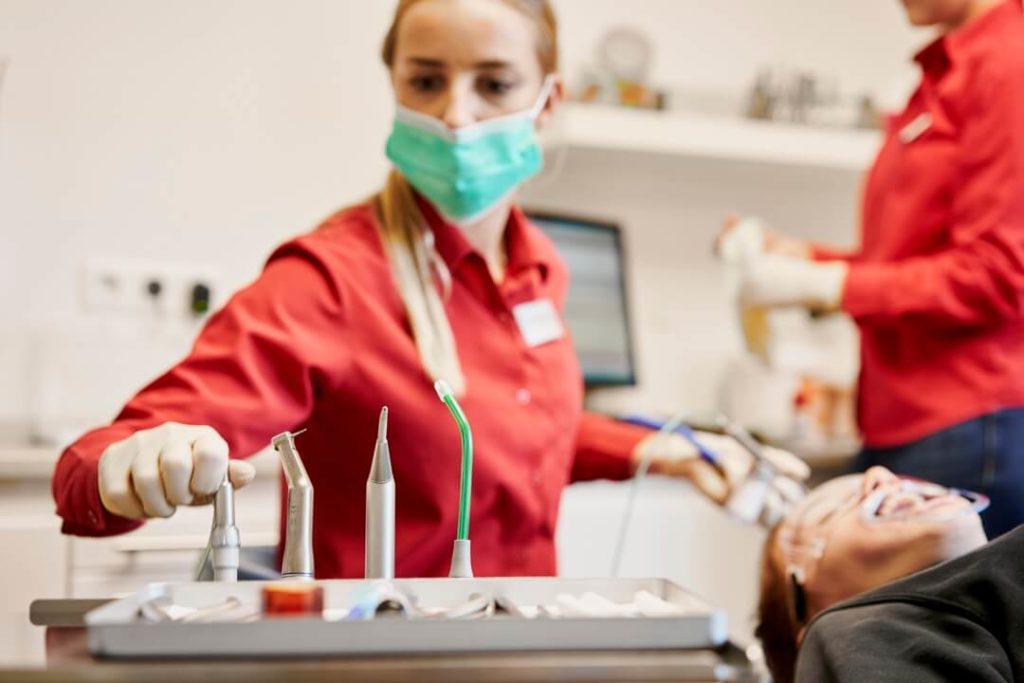Lean is about creating value for the customer, whether that ensues from the reduction of time, an increase in quality, or an increase in flexibility. It is significant to note that motion – of raw materials, people, or equipment – costs money. The lean concept of function teaches us that unnecessary motion of items or personnel, including physical exertion such as reaching, lifting, or bending translates to waste.
Each action that is futile to the customer or patient’s needs can be subjectively deemed a waste. In an orthodontic setting, unnecessary motion can include getting up from your chair and walking two steps to get the forceps you need. This blatant design flaw is not only ergonomically inefficient but also costs you energy, time, and money. Additionally, motion waste also creates distractions and sources of error, considerably impairing a smooth workflow.
The problem of motion waste in orthodontics
Does your every day look like this: You go to treatment room 1, do your work there, go back to the office, write an e-mail while the next patient waits in treatment room 2. From there you go to treatment room 3, then to the reception to clarify something or sign something, then back to your office to make a call, then back to treatment room 1, etc.
This, right here, is the problem. Instead of keeping your treatment steps short and concise, you’re doing everything and yet nothing at all. Ideally, your day should look something like this: From the chair to the cupboard and back, from the room to the next patient and back. Now, how can you simplify your route?
The correct way to align your routine is by reserving time for different tasks. Use time in the early morning or set up a buffer time in the afternoon to catch up on things you couldn’t do before. By optimizing and connecting all processes, the waiting time for your patients should be minimized and no time is wasted.
How can you implement lean into your orthodontic setting?
Although lean principles originated in the manufacturing sector, they can be readily applied to your everyday scenarios as a dental professional in an orthodontic setting.
Below are a few examples of exercising lean in your orthodontic practice:
Using a multi-tape in the direct adhesive technique
Picture this: You sit relaxed in the 12 o’clock position behind the patient with your focus directed on the tooth to be bonded. The assistant gives you a pair of bracket forceps, you put it on the tooth, return it, take a probe, and clean the edges of the bracket. In an idyllic scenario, your focus remains on the tooth in a well-rehearsed pattern of bracket-tooth-bracket-tooth formation.
However, if you’re working with an insufficiently trained assistant, they may make mistakes such as passing you bracket tweezers at the wrong angle. The end result, you will have to keep looking away from the tooth to see what is going on, ergo a wandering focus and an interrupted flow. You can easily prevent this from happening by coordinating a set rhythm with your assistant to make the process faster and more efficient.
Facilitating tooth movement in the shortest way
The principle of saving time, energy, and money can be applied to efficient tooth movement. Say, you have a typical skeletal class 2 patient with a large overbite, crowding in the upper jaw, none in the lower jaw. What is your next move? You can start leveling with the straight-wire technique which would resolve the crowding in the maxilla mainly by a protrusion. But then, you’d have to retract the protruded front as a whole.
Instead, if you retract the canines back into the extraction gap during leveling, it would not only close the gap but also reduce the binding in the front, thus allowing you to prevent unwanted protrusion of the upper incisors. In other words, simply by “first bringing the canines back a bit”, you avoid unnecessary movements of the teeth, successfully eliminating the rowboat effect!
This is the spirit of Lean Orthodontics®. All unnecessary motion is removed which makes the process (treatment) easier, faster, and better overall for you and your patient.

